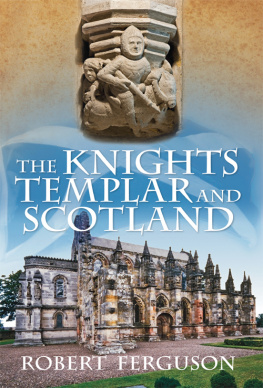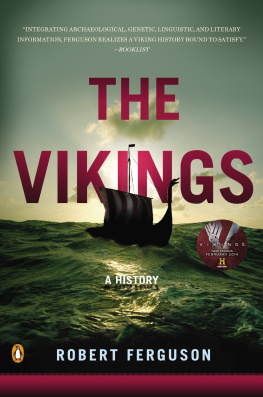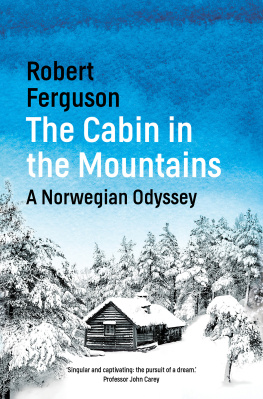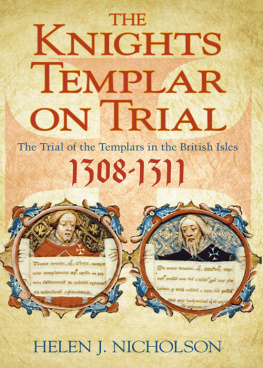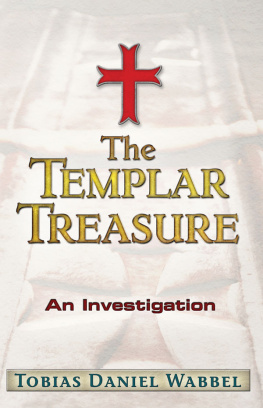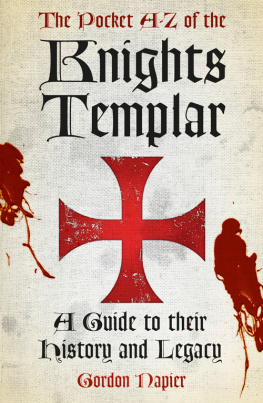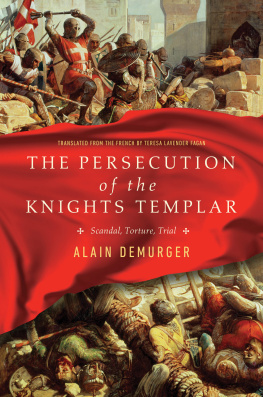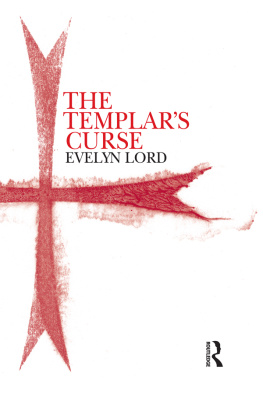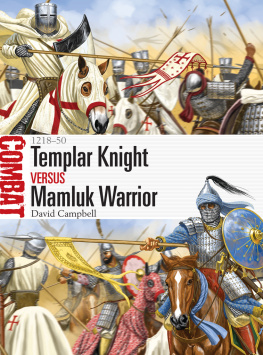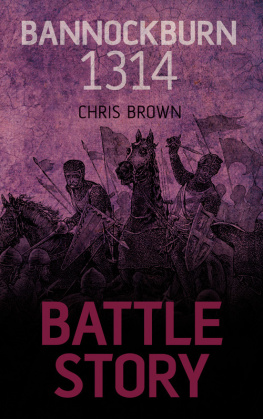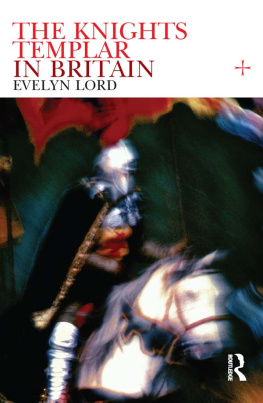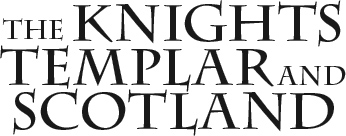Dedicated to Peggy,
and to Shari and Tim
First published in 2010, 2011
The History Press
The Mill, Brimscombe Port
Stroud, Gloucestershire, GL 5 2 QG
www.thehistorypress.co.uk
This ebook edition first published in 2011
All rights reserved
Robert Ferguson, 2010, 2011
The right of Robert Ferguson, to be identified as the Author of this work has been asserted in accordance with the Copyrights, Designs and Patents Act 1988.
This ebook is copyright material and must not be copied, reproduced, transferred, distributed, leased, licensed or publicly performed or used in any way except as specifically permitted in writing by the publishers, as allowed under the terms and conditions under which it was purchased or as strictly permitted by applicable copyright law. Any unauthorised distribution or use of this text may be a direct infringement of the authors and publishers rights, and those responsible may be liable in law accordingly.
EPUB ISBN 978 0 7524 6977 5
MOBI ISBN 978 0 7524 6978 2
Original typesetting by The History Press
Ebook compilation by RefineCatch Limited, Bungay, Suffolk
CONTENTS
Illustrations
ACKNOWLEDGEMENTS
First I would like to thank the staff at the National Archives of Scotland and the National Library of Scotland. For an American who was foraging around looking for ancient documents and old books, their help was invaluable.
J. Connall Bell and Patricia Tennyson Bell are to be thanked for providing me with the motivation to begin writing this book. Along this line, special thanks go to John Flemming, a Scot whose opinion about the Templars being at Bannockburn was, and is, unequivocal.
In Scotland, special thanks go to Stuart Morris of Balgonie for providing a link between the past and the present. I cannot thank George Stewart enough for putting the current Scottish Templar Orders in perspective. Ron Sinclair and Bill Hunter provided me with their generous help in connecting me with sources of information about the current Templar community and about Alexander Deuchar. Also, thanks go to John Ritchie who provided me with an initial connection with the Milit Templi Scotia.
On the practical side, I would like to thank Victoria Kibler who proofed and edited my manuscript. Thanks also go to Jonathon Kibler-McCabe, who speaks fluent Gaelic, and to Bronwyn Jones who translated works originally in French that went back to the eighteenth century. The Appendix could not have been written without the help of Don Bentley, a Professor Emeritus, Pomona College, who specialises in statistics.
The help of Simon Hamlet of The History Press in guiding me through the initial process was invaluable, as was that of Robin Harries. Special thanks go to Abigail Wood, my editor, who converted the language of a lawyer and the format of a legal brief to a very readable book. And, finally, there is my wife Peggy, who put up with me when I was cloistered in the study, and who motivated me when I needed encouragement to continue.
PREFACE
At the bottom of the letterhead stationary for the Ordo Supremus Militaris Templi Hierosolymitani, Grand Priory of the Scots, is the phrase:
Scotland The Unbroken Templar Link.
This book had its beginning when I asked the Grand Bailiff if that phrase was true, and where could I find the information to back it up? His answer was yes, the statement was true, but no, he did not know exactly where the information could be found. This prompted my naive reply, Ill find out, thinking the answer was simple and that it could be the subject for an article in the Priorys newsletter.
What started as a simple question turned into a major project that has required over three years of research and writing. It quickly became apparent that over the last hundred years, little has been written about the Knights Templar in Scotland. This was particularly true for the period from 1314, the year of the Battle of Bannockburn, to the early 1960s. During this period, there were various antidotal references and a lot of speculation, but I could find no easily referenced historical facts. This raised the question, if a substantial amount of effort is going to be required to answer my first question, why not write a book?
Another reason for this book is a statement from my good friend John Fleming, a Scot who now lives in southern California, but still returns to Scotland for a couple of months each summer. When I mentioned I was writing a book about the Templars and Scotland, he replied, Oh, you mean at Bannockburn.
I was surprised and asked, What do you mean? Do you know about them?
Of course, he answered. Everybody does.
But how? I asked. Nothing has been written.
Its just passed down, he said. Everyone knows the Templars were at Bannockburn. You hear about it.
In line with Johns statement, I thought the best place to begin the quest was with the oft-asked question, were the Knights Templar present at the Battle of Bannockburn? But the Battle of Bannockburn happened two years after the formal dissolution of the Templars, and seven years after King Philip IV of France issued the warrants for their arrest on 13 October 1307. From this, it became clear that before Bannockburn could be analyzed, it was necessary to research the history of the Knights Templar in Scotland from the time of their arrival in 1127, until their arrest and dissolution. But an understanding of Scotlands Templar history required a good general knowledge of who and what the Templars were. There were no Templar battles in Scotland. In Scotland the Templars were monks, recruiters, landlords and businessmen. So, in order to insure that all the readers have a basic knowledge of the Templars, the book begins by describing these aspects of Templar life, followed by their battles and activities in Palestine.
Most of what is written concerning the Knights Templar in Scotland consists of articles written in the late nineteenth and early twentieth centuries. I found that these tend to be anecdotal, concentrate on the detail of particular events, and do not provide a description that leads to an understanding of the lives of the medieval Knights Templar. After several readings of the available materials, it became apparent that the information about who and what the Templars were in Scotland revolved around their headquarters, Balantrodoch, and the management of their hundreds of properties that existed throughout Scotland.
Why did the Templars come to Scotland? The answer to this question lies, to a great extent, in the excommunication in 1304 of the Scottish king, Robert the Bruce. This event is significant not only in explaining the flight of the Knights Templar to Scotland, but in explaining their reasons for staying there. Clement V was Pope when the French King Philip IV ordered their arrest, and it was Clement V who formally dissolved the Knights Templar. As significant as this event is, there is little modern discussion of it. Most historians give it no more than a few sentences. While the reason for the excommunication may be well known, I could not find a consistent version of the events leading up to it. In Chapter 4 I outline a number of the various versions.
Until the Battle of Bannockburn, most of what occurred in Scotland is tied to what happened first in Europe. In order that the reader might understand the Templars flight to Scotland, I recount the events that led to the Templars arrest in Chapter 5.

